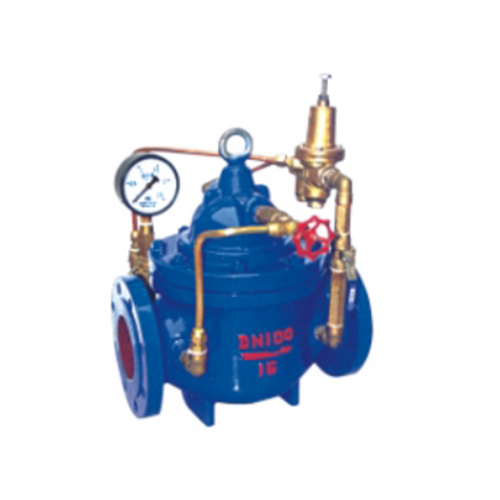
Ball Valve Coatings and Surface Treatments for Durability
Introduction
Ball valves are critical components in various industries, including oil and gas, chemical processing, water treatment, and power generation. Their performance and longevity depend on material selection, design, and—importantly—surface treatments and coatings. Proper coatings enhance corrosion resistance, reduce wear, and improve sealing capabilities, ensuring reliable operation in harsh environments.
This article explores common ball valve coatings and surface treatments, their benefits, and applications.
---
1. Importance of Coatings and Surface Treatments
Ball valves operate in demanding conditions, facing:
- Corrosion from aggressive fluids (acids, seawater, chemicals).
- Abrasion due to particulate-laden media.
- High temperatures and pressures that degrade materials.
- Friction and wear from repeated operation.
Coatings and surface treatments mitigate these challenges by:
- Extending service life by protecting against degradation.
- Reducing maintenance costs by minimizing wear and corrosion.
- Improving sealing performance by enhancing surface smoothness.
- Enhancing chemical resistance for compatibility with harsh media.
---
2. Common Ball Valve Coatings
2.1. Electroplated Coatings
Electroplating deposits a thin metal layer onto the valve surface via electrochemical processes. Common coatings include:
Nickel Plating
- Benefits: Good corrosion resistance, hardness, and lubricity.
- Applications: Used in mildly corrosive environments (e.g., water systems).
Chromium Plating
- Benefits: High hardness, wear resistance, and low friction.
- Drawbacks: Brittle and prone to cracking under stress.
- Applications: Ball valves in abrasive or high-wear applications.
Zinc Plating
- Benefits: Sacrificial protection (galvanic corrosion resistance).
- Applications: Low-cost corrosion protection for carbon steel valves.
2.2. Thermal Spray Coatings
Thermal spraying involves melting and projecting materials onto the valve surface. Common methods include:
HVOF (High-Velocity Oxygen Fuel) Spraying
- Materials: Tungsten carbide, chromium carbide, or ceramic coatings.
- Benefits: Extremely hard, wear-resistant, and corrosion-resistant.
- Applications: Severe abrasion or erosion conditions (e.g., slurry handling).
Plasma Spraying
- Materials: Ceramics (alumina, zirconia) or metallic alloys.
- Benefits: High-temperature resistance and electrical insulation.
- Applications: Valves in high-temperature or chemically aggressive environments.
2.3. PVD/CVD Coatings
Physical Vapor Deposition (PVD) and Chemical Vapor Deposition (CVD) create ultra-thin, durable coatings:
Titanium Nitride (TiN) Coating
- Benefits: High hardness, low friction, and gold-like appearance.
- Applications: Ball valves requiring wear resistance and smooth operation.
Diamond-Like Carbon (DLC) Coating
- Benefits: Exceptional hardness, chemical inertness, and low friction.
- Applications: Valves in aggressive chemical or high-wear applications.
2.4. Polymer Coatings
Polymer coatings provide chemical resistance and sealing enhancements:
PTFE (Polytetrafluoroethylene) Coating
- Benefits: Excellent chemical resistance, low friction, and non-stick properties.
- Applications: Valves handling corrosive acids, solvents, or sticky media.
Epoxy Coatings
- Benefits: Strong adhesion, corrosion resistance, and impact resistance.
- Applications: Water and wastewater treatment valves.
Polyurethane Coatings
- Benefits: Abrasion resistance and flexibility.
- Applications: Mining and slurry applications.
2.5. Ceramic Coatings
Ceramic coatings offer extreme hardness and corrosion resistance:
Alumina (Al₂O₃) and Zirconia (ZrO₂) Coatings
- Benefits: High wear resistance, thermal stability, and chemical inertness.
- Applications: Valves in high-temperature or highly corrosive environments.
---
3. Surface Treatments for Ball Valves
3.1. Hardening Treatments
Case Hardening (Carburizing/Nitriding)
- Process: Diffusing carbon or nitrogen into the surface layer.
- Benefits: Increases surface hardness while maintaining core toughness.
- Applications: High-pressure ball valves subject to mechanical stress.
Induction Hardening
- Process: Localized heating and quenching to harden specific areas.
- Benefits: Precise hardening of critical surfaces (e.g., ball and seat).
3.2. Passivation
- Process: Treating stainless steel with nitric or citric acid to remove free iron and enhance chromium oxide layer.
- Benefits: Improves corrosion resistance by preventing rust formation.
- Applications: Stainless steel ball valves in chemical or marine environments.
3.3. Shot Peening
- Process: Bombarding the surface with small metal shots to induce compressive stress.
- Benefits: Reduces fatigue cracking and improves wear resistance.
- Applications: High-cycle ball valves subject to repeated mechanical stress.
3.4. Laser Cladding
- Process: Melting and fusing a protective alloy onto the valve surface using a laser.
- Benefits: Precise, high-performance coatings with minimal heat distortion.
- Applications: Critical valves in oil & gas or power plants.
---
4. Selection Criteria for Coatings and Treatments
Choosing the right coating depends on:
1. Operating Environment
- Corrosive media (acids, seawater) → PTFE, ceramic, or nickel coatings.
- Abrasive particles → HVOF, tungsten carbide, or DLC coatings.
- High temperatures → Ceramic or plasma-sprayed coatings.
2. Material Compatibility
- Stainless steel valves benefit from passivation or PVD coatings.
- Carbon steel valves may require zinc plating or epoxy coatings.
3. Performance Requirements
- Wear resistance → Hard chrome or TiN coatings.
- Low friction → PTFE or DLC coatings.
4. Cost Considerations
- Electroplating is cost-effective for mild conditions.
- HVOF or laser cladding is expensive but justified for extreme conditions.
---
5. Future Trends in Valve Coatings
1. Nanocoatings – Ultra-thin, self-healing coatings for enhanced durability.
2. Hybrid Coatings – Combining polymers and ceramics for multi-functional protection.
3. Environmentally Friendly Coatings – Low-VOC and non-toxic alternatives.
---
Conclusion
Ball valve coatings and surface treatments are essential for ensuring durability, corrosion resistance, and optimal performance. From electroplating to advanced thermal spray and PVD coatings, each method offers unique advantages depending on the application.
By selecting the appropriate coating based on environmental conditions, material compatibility, and performance needs, engineers can significantly extend valve lifespan and reduce maintenance costs. Future advancements in nanotechnology and hybrid coatings promise even greater improvements in valve durability and efficiency.
Understanding these options allows for better decision-making in valve selection and maintenance, ensuring reliable operation in even the harshest industrial environments.
(Word count: ~2000)
Ce site Web utilise des cookies pour vous garantir la meilleure expérience sur notre site Web.
Commentaire
(0)